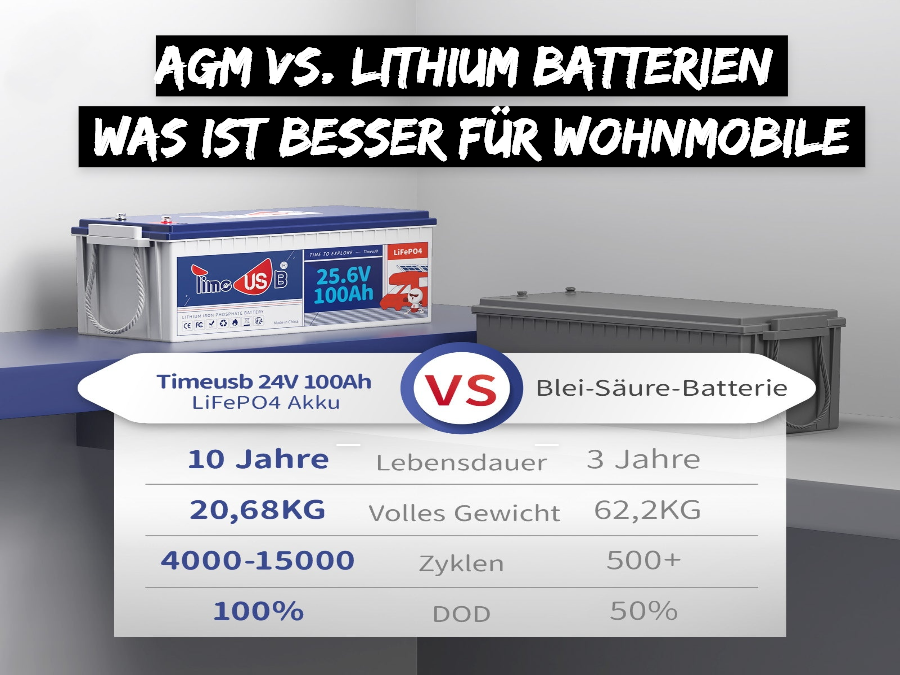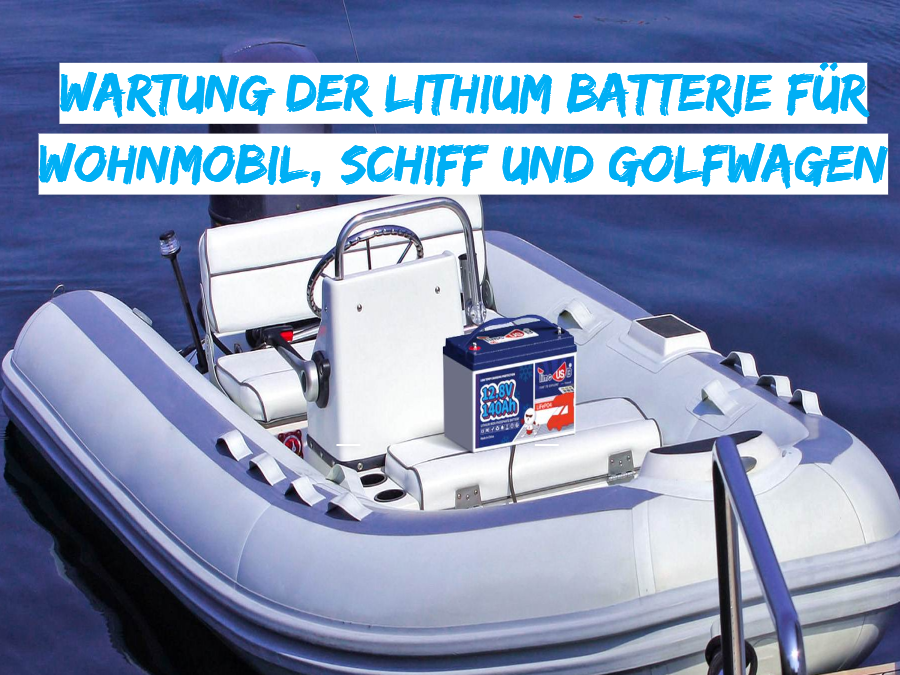How to Charge a Deep Cycle Marine Battery

Deep cycle batteries are essential for powering a wide range of applications, from marine and recreational vehicle use to renewable energy systems and off-grid power systems, but to ensure their longevity and optimal performance, appropriate charging techniques are essential.
In this article, we cover best practices for deep cycle batteries and highlight considerations to help you make the most of these versatile energy sources.
Information about Deep Cycle Batteries
Before we discuss the charging process, it's important to understand the basic characteristics of deep cycle batteries. Unlike traditional car batteries, which are designed to provide short bursts of power, deep cycle batteries are designed to be discharged for a large portion of their capacity and then recharged. These batteries are often used in situations where a constant, stable power source is required, making proper charging even more important to their performance and longevity.
Why Charging Your Deep Cycle Battery Is Important
Properly charging your deep cycle battery can significantly impact its lifespan and overall performance. The consequences of improper charging can be devastating, especially with lead-acid batteries where overcharging or partial charging can cause irreversible damage.
Lithium marine batteries, on the other hand, offer a more forgiving dynamic. These batteries can be used beyond 50% capacity without compromising their integrity and they do not need to be recharged immediately after use, which is convenient after a day out on the water.
However, regardless of battery type, including ionic lithium, careful charging practices are still essential to maximize performance. Understanding these practices is critical to maintaining the longevity and functionality of your deep cycle battery. Let's explore how to properly charge these batteries.
battery charging cycles
Deep cycle batteries can be fully charged multiple times during their lifetime. They are typically discharged to 20% to 50% of their capacity before being charged to 100%, allowing for a reliable cycle of power consumption and recharging.
However, the depth of discharge (DoD) also affects the lifespan of the battery. Repeated shallow discharges (5%–10% of capacity) can shorten the overall lifespan of the battery. To extend the lifespan of a battery, regular and deeper discharges – down to 50% of capacity – are therefore crucial.
Efficient charging technologies
To effectively charge a deep cycle battery and maintain its integrity, it is important to follow certain guidelines:
- Correct selection of the charger: Use a charger specifically designed for your deep cycle battery type. While it may be tempting to mix different battery types and chargers, this can lead to voltage mismatches and subsequent damage to the battery. To ensure fast, safe charging, you should equip your battery with the appropriate charger type. For Timeusb Lithium Deep Cycle Batteries For example, you should Timeusb Lithium Battery Chargers which are known for their compatibility with LiFePO4 marine batteries.
- Optimize loading speed: The right charger not only protects your battery, but also enables faster, more efficient charging.
So choosing the right charger will not only ensure safety, but also quick and efficient charging of your deep cycle battery. Be sure to follow these guidelines for proper charging and maintenance to get the most out of your deep cycle battery's performance and lifespan.
The 3 Best Ways to Charge a Deep Cycle Battery
Charging a deep cycle battery doesn't have to be a daunting task if you follow this comprehensive guide. Regardless of your battery type, there are several methods available to you for charging a deep cycle battery:
1. Solar energy
If you choose solar energy, you will need to invest in a solar power system consisting of solar panels, one or two charge controllers, and inverters. This initial investment can be significant, but the long-term benefits include gradual cost savings as you switch from grid power or fossil fuels to solar power.
2. Mains power
Alternatively, you can use AC power from the mains to charge your deep cycle battery, but this will require a suitable AC-DC battery charger. For example, lithium batteries require a specially designed charger such as the Timeusb AC-DC LFP portable battery charger as they cannot be charged using a normal lead acid battery charger.
3. Alternator and starter battery
If the above methods are not practical for you, charging your deep cycle battery via the alternator and starter battery is an option. This process requires the coordination of an onboard DC/DC battery charger to effectively charge the deep cycle battery.

By understanding and utilizing these charging options, you can ensure that your deep cycle battery is charged effectively and efficiently, giving you uninterrupted power when you need it most.
How long does it take to charge a deep cycle battery?
How long it takes to charge a deep cycle battery depends on the charger type, the size and type of battery, and the initial state of charge. Charging a deep cycle battery is crucial to its long-term functionality.
The duration of a full charge can range from one hour to 24 hours, depending on these factors. A useful rule of thumb is to divide the battery’s amp-hours by the amps supplied by the charging source, be it solar panels, a battery charger or a generator. For example, a 12V 100Ah lithium battery, charged by three 100 watt solar modules at 25 amps under ideal conditions, will need approximately four hours for a full charge (100 Ah/25 A = 4 hours).
How long does a deep cycle battery last without charging?
Different types of deep cycle batteries have different lifespans. While lead batteries can last between three and ten years depending on the type, lithium batteries can last 15 to 20 years. In terms of cycle life, lead batteries offer 250 to 1200 cycles, while lithium batteries can handle 2000 to 5000 cycles. High quality lithium batteries such as Timeusb have a service life of 4000 to 15000 cycles.
Without charging, a properly maintained deep cycle battery can last up to six months under optimal conditions with little or no power consumption. It is advisable to charge the battery every 3-4 months using a suitable charger for deep cycle batteries.
Why should you never overcharge your deep cycle battery?
Overcharging a deep cycle battery will have a detrimental effect on its performance and can lead to plate degradation, increased gassing and reduced battery life. In addition, excessive voltage can increase internal battery temperatures, posing a fire hazard. To ensure performance and safety, it is important to use a high-quality charger designed specifically for deep cycle applications that can shut off when it detects a full charge or provide a trickle charge when needed to prevent overcharging. Investing in a high-quality charging system can extend battery life and ensure continued functionality of your devices.
In addition to using a high-quality charger for deep cycle batteries, it is important to note that Timeusb lithium batteries and lithium battery chargers come with built-in overcharge protection features. These features are designed to improve safety and longevity by intelligently preventing overcharging, thus ensuring the performance and overall life of the battery.

Timeusb charger 14.6V 20A for 12V battery
Thanks to the integrated overcharge protection, the lithium batteries and -chargers from Timeusb a reliable and safe solution for users, ensuring that batteries are maintained at optimal levels without the risk of overcharging. This proactive approach not only helps protect the integrity of the battery, but also contributes to the safety and stability of the charging process, minimizing potential hazards associated with overcharging.
Can I charge a deep cycle battery with a normal charger?
Using a conventional battery charger to charge your deep cycle battery may not produce optimal results. This is due to the generation of excess heat during the charging process. Since a deep cycle battery is not designed to handle fast charging and additional heat, reaching full capacity may not be possible.
Conclusion
Properly charging a deep cycle battery is critical to maximizing its performance and lifespan. By choosing the right charger, following best charging practices, and providing regular maintenance, you can get the full potential out of your deep cycle battery, whether you're using it to power your boat, RV, renewable energy system, or other application. Following these guidelines will not only save you money in the long run, but will also contribute to a more sustainable and efficient use of energy resources.




